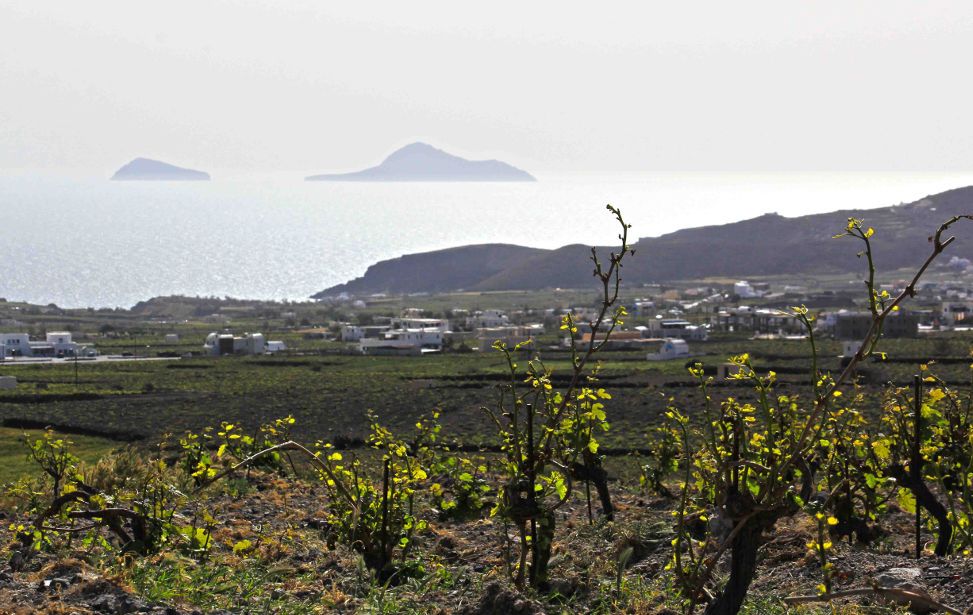It’s not just Santorini that has been grabbing all the headlines, watch out too for wines made on Crete, Paros, Lemnos, Samos, Kefalonia and Zante – all using indigenous varieties to good effect.
Nothing quite prepares you for your first views of the Caldera, the half-moon shaped volcanic depression which outlines what remains of Santorini and neighbouring Thalassa. Seen from the smart tasting room of the island’s cooperative Santo Wines, these are quite literally views you cannot turn away from – and since Santo turned its former workaday visiting rooms into one of the island’s trendiest sunset spots, you don’t have to.
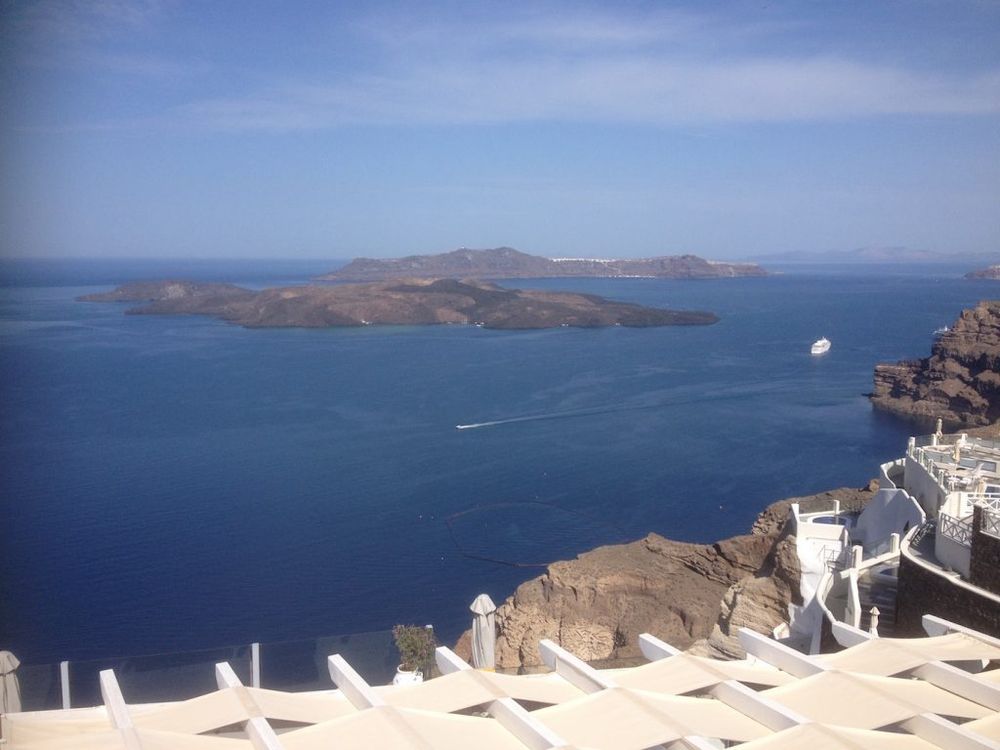
When you visit the remains of the ancient Minoan city of Akrotiri a few miles away, you realise quite how dramatic this explosion was. This was almost certainly the ancient city of Atlantis, and what is visible today apparently represents just 5-10% of what may have then been the largest city in the southern Mediterranean, destroyed in 1672 BC in what scientists say was one of the most devastating explosions in human history, one that changed the world’s climate for two years.
As you taste the wines grown in this famous volcanic soil, it is hard not to wonder at the history and geological evolution that made them so unique… and sought after. In The Wines of Greece, Konstantinos Lazarakis MW, says that “Santorini has clearly emerged as the thoroughbred able to pull Greek wine out of anonymity… for many wine professionals, Greek wine is Santorini and in terms of individuality of regional style, as the wine world stands right now, it belongs without a shadow of doubt in the top five.”
I wouldn’t argue with that.
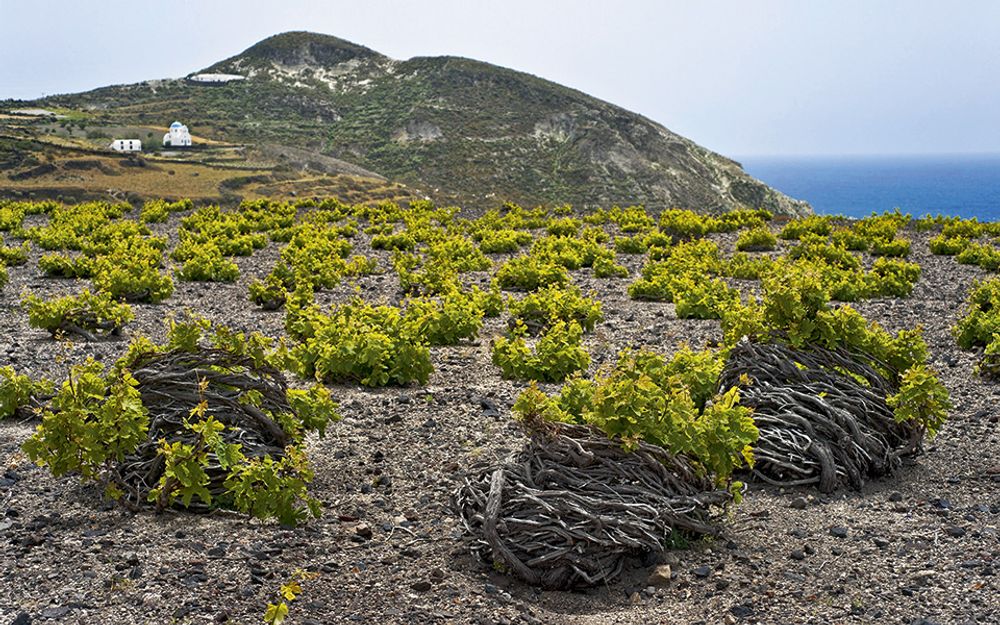
The unique Assyrtiko ‘basket’ vines on Santorini, many are thought to be over 400 years old
Santorini’s Assyrtiko grapes are rumoured to be the most expensive grapes in the world with supply massively outstripped by demand, according to Yiannis Paraskevopoulos, owner of Gaia Wines which has been producing a range of Santorini wines on the island since the mid 1990s, and has established itself as one of the quality leaders amongst Santorini’s 17 producers, which also include fellow pioneers Ktima Gavalas and Ktima Hatzidakis.
“The Assyrtiko we make here is very different from what is grown in the north or elsewhere. We are talking very low ph, below 3 (because of the volcanic soil and lack of potassium) and high acidity. We are aiming for extreme dryness and minerality – not the fruit-driven flavours that predominate in the north,” he says.
Costs are rising, in part, because yields are so low – around 25 hectolitres per hectare against typically 80 – but also because producers from other parts of Greece want Assyrtiko grapes from the island to make wines of their own, at a time when plantings are actually falling as more land is given over to tourism, just 900 hectares are given over to grape cultivation.
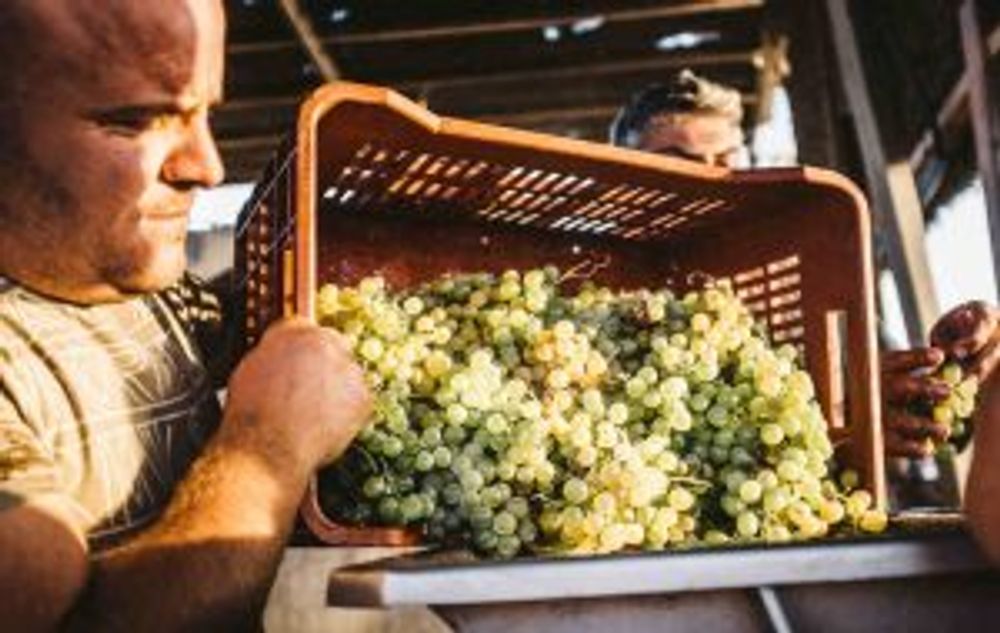
Growers say the price of grapes has risen 480% in the past six years, with another 50% rise expected over the next two years, as new producers come in, amongst them Argi Gerovassiliou. His Thessaloniki-based winery plans its first dry Assyrtiko from here this year, made with grapes grown on the neighbouring island of Thelassia.
“It’s almost unthinkable to be a forward looking Greek producer and not share this action,” he says.
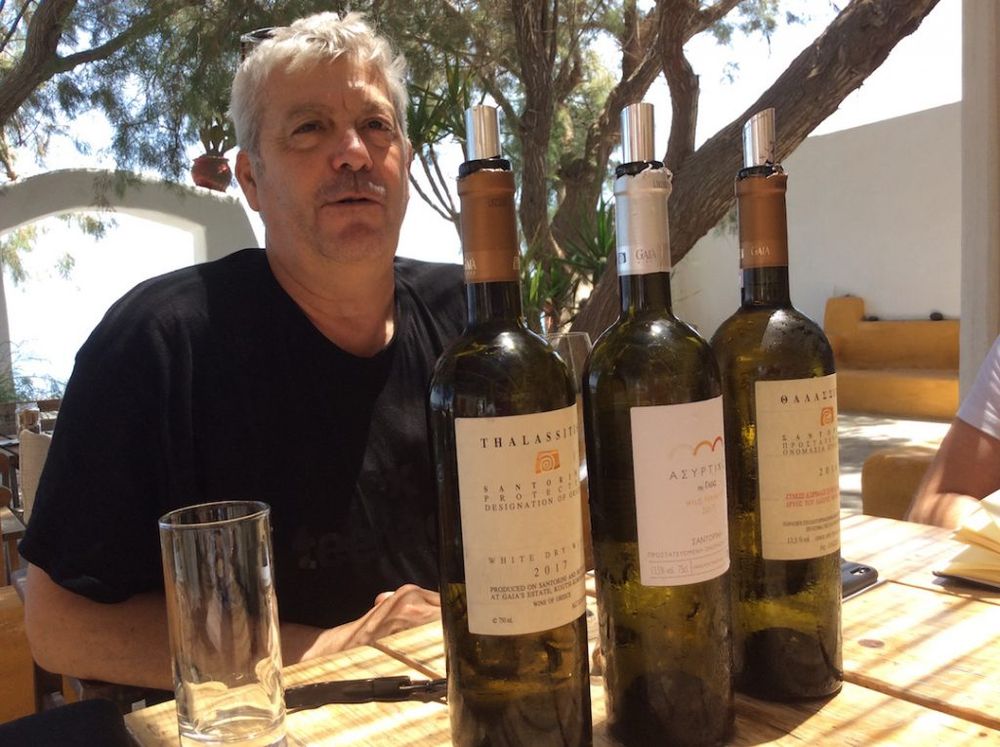
“We are aiming for extreme dryness and minerailty not fruit-driven flavours”: Yiannis Paraskevopoulos, owner of Gaia Wines
Paraskevopoulos echoes this, suggesting the wines are truly unique, often featuring a salinity from the sea salt that naturally blows onto the vines (alongside, occasionally, volcanic dust from Nea Kameni, the youngest volcano in the region, which lies inbetween Santorini and Thalassa) and a natural dry crispness that producers elsewhere would kill for.
“This is a white wine that thinks it’s a red – so it’s not necessarily to everyone’s taste. You either love it or hate it,” he says.
Certainly working with grapes here is not for the faint-hearted. Even though wine and tomatoes are just about the only things that grow on this island at all – they are the only green visible amongst the dark soil or white houses – many wonder where the vines are, because the traditional basket-shaped vines that grow Assyrtiko look so unfamiliar.
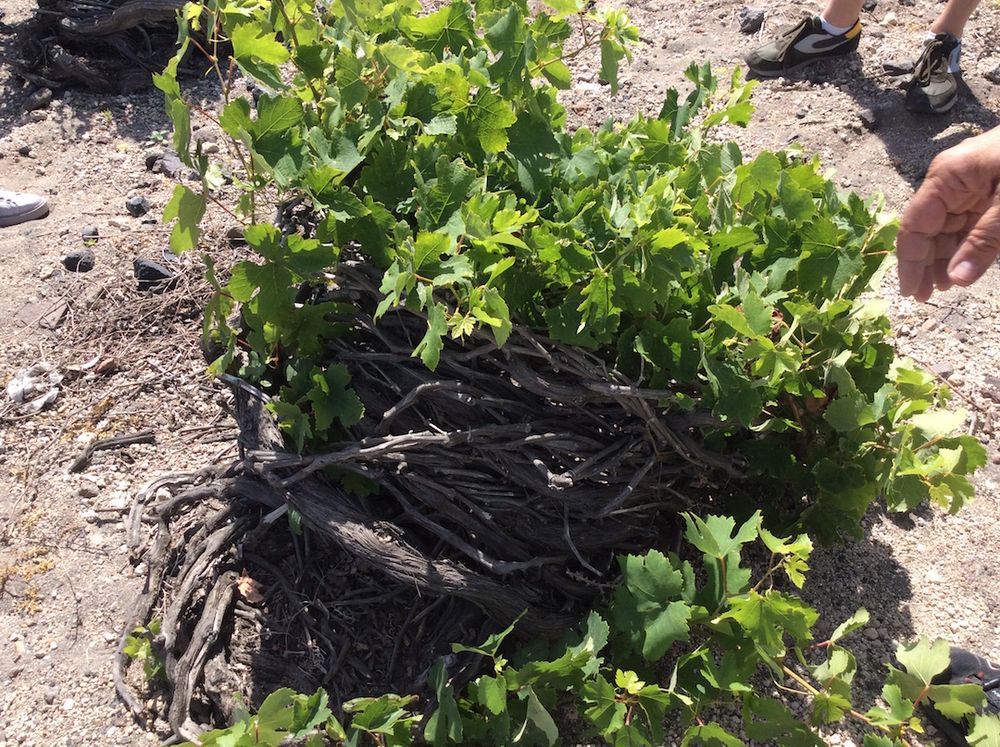
Designed to protect the grapes from wind – which can be ferocious here in the Cyclades Islands – many of these wild vines are over 400 years old; able to replenish themselves eight times over the course of their lifetime, their deep but firm roots make them perfect for Santorini’s unforgiving volcanic soil. And thanks to the total absence of clay, they are actually phylloxera-immune.
Paraskevopoulos says Assyrtiko – a tough skinned variety that can cope with lack of water and very hot conditions – was always grown here and is ideal, even though it can be hard to work with and in some years the crop can be lost. Harvest starts in early August and has been getting earlier over the past few years; like other quality producers, Gaia – whose name means Mother Earth – is very selective in the choice of grapes and can discard up to 50% of the must during pressing.
The three wines he produces on Santorini – the un-oaked expressive Thalassitis 2017, the Wild Ferment 2017 and the Thalassitis Oak-Fermented 2016 (the first two available in the UK through Hallgarten & Novum Wines – are all impressive wines, very much but very differently showing the character of Assyrtiko, drawn here from the 80 year old un-grafted vines that are typical of Santorini.

The Thalassitis is bone dry, so much so that some may find it quite hard going; not so the Wild Ferment taken from a different vineyard than the Thalassitis that allows a more aromatic expression after the grapes first undergo 12 hours of skin-contact before half are kept in stainless steel and the other half put into new 225 litre barrels – made from three different types of oak – after which fermentation develops at its own pace.
Other Greek islands are also ready to share the limelight with Santorini
It is Santorini that has been grabbing all the headlines but other Greek islands have also seen big improvements in their wine industries, with most focusing on local and rare native varieties: tasters seeking to become a member of the WCC (the New York-based wine century club, home to those who have tried at least 100 grape varieties) would be well served here.
Sebastian Payne, who buys Greece for the Wine Society, sees Crete as having lots of potential.
“With the market boosted by tourism, much of it increasingly up-scale, younger generation growers (women and men) are making good wine from such grapes as Vidiano, Kotsifali and Mandalaria. This represents a big change, given how their predecessors were happy to make old style oxidised stuff”.
But other islands are getting in on the act, with the rounded, fruit-forward Moraitis Estate Malagousia 2017 from Paros indicative of the new trend. (Wine Society).

One of the biggest importers of Greek island wines is Southern Wine Roads. It imports also from Paros – try in particular the fruit-forward Moraitico white (made with Malagousia and Monemvasia) or its rosé, produced with Malagousia and a tiny amount of Mavrotragano. However SWR also brings wines from Lemnos, Samos, Kefalonia and Zante – alongside of course, Crete and Santorini.
The organic red and orange wines produced by Methymnaeos on Lesbos are highly expressive, made from the unusual-tasting local Chidiriotico red grape. Like the wines from Santorini, this is made on volcanic soil, in this case on the lava that forms part of the Lesbos Petrified Forest. The tangy, sublime 2014 red in particular suggests Lesbian wine has a great future ahead of it (whatever your sexual inclination).
“These wines reflect the character and power of the soil, which is rich in natural sulphur and copper compounds and very disease resistant,” says Maria Moutsou, founder of Southern Wines Roads.
At the other end of the scale, Gold 2016, made by the Melissinos Winery on Kefalonia from the local and rare Zakynthina variety tastes almost sherry-like, again reflecting volcanic soil, but from very different terrain.
From Zante the white Goustolidi grape forms the backbone of Novita, and the red Avgoustiatis makes Allegro, a zippy wine given further substance by one month’s oak-barrel ageing.
These are all wines well worth trying because, frankly, they are unlike almost anything else I have tasted this year, banishing memories of poorly-made supermarket Greek wine forever.
But for now, Santorini will continue to dominate our growing affinity with Greek island wines, with producers like Hatzidakis (Wine Society) and Gavalas (SWR) joining Gaia in boosting the popularity of Assyrtiko from the island.
“We just can’t keep up with the demand, from the UK but also other markets,” says Gaia’s Yiannis Paraskevopoulos. “Once you have tasted a good Assyrtiko from this island you can never forget it, because – like Santorini itself – these wines are truly unique.”
